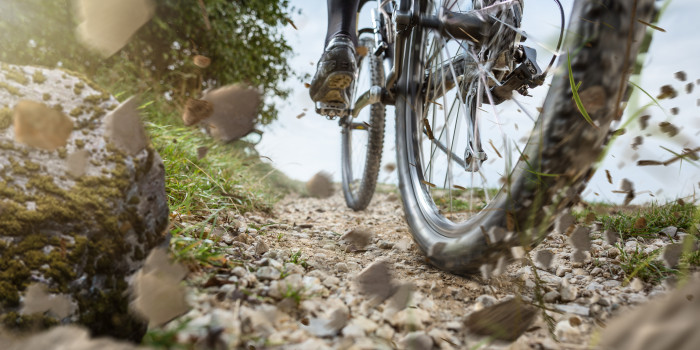
Mastering Gravel Riding: Essential Gear, Techniques, and Skills
Gravel riding has surged in popularity in recent years, offering cyclists a mix of adventure and off-road excitement. Whether you're a seasoned mountain biker looking to expand your horizons, or a road cyclist looking for a new challenge, gravel riding provides a great alternative to traditional cycling disciplines.
Here we dive into the transition from mountain biking to gravel riding, covering everything from converting your existing mountain bike to buying a dedicated gravel bike, essential gear recommendations, and techniques and skills for mastering the gravel terrain.
Converting Your Mountain Bike for Gravel Riding:
Converting your mountain bike for gravel riding is a cost-effective way to dip your toes into the world of off-road cycling. Start by swapping out your mountain bike tyres for wider, smoother tyres with a tread pattern optimised for gravel terrain. Aim for tyres in the range of 38mm to 45mm width, as this gives the perfect balance of traction, comfort, and efficiency on gravel roads and trails.
Next, consider upgrading your handlebars to a wider, flared design. These offer a more stable and comfortable riding position, especially when navigating rough or uneven terrain. Also, adjusting your gearing to provide a wider range of ratios can improve your bike's versatility, perfect for tackling steep climbs and fast descents .
Finally, don't overlook the importance of suspension adjustments for gravel riding. While traditional mountain bike suspension may be overkill for gravel terrain, experiment with adjusting your fork's compression and rebound settings to find the perfect balance between plushness and efficiency.
Buying a Gravel Bike:
If you're ready to fully commit to gravel riding, investing in a dedicated gravel bike is the way to go. Gravel bikes are purpose-built for off-road adventures, with specialised geometry, features, and components designed for the gravel terrain. When choosing a gravel bike, factors to think about are the frame material, tyre clearance, and component specs to make sure it’s a good fit for your riding style.
For the frame, carbon fibre frames offer lightweight and responsive ride quality, and aluminium frames are more durable and affordable.
When it comes to tyres, look for a bike with enough tyre clearance to accommodate wider tyres up to 700x42c or larger. And for components, choose a drivetrain with a wide range of gears, and good brakes! Nice to haves would be integrated storage options, mudguard mounts, and dropper seatposts.
Essential Gear for Gravel Riding:
So now you’ve found the right bike, time to think about your gear.
- Clothes: Look for moisture-wicking fabrics, padded shorts, and lightweight layers to stay comfortable in changing weather conditions and long rides.
- Hydration Systems: Stay hydrated on long gravel rides with a hydration pack or water bottle cage mounted to your bike. You can also look at getting a hydration pack with a built-in hydration reservoir and storage compartments for carrying key things such as snacks, tools, and spare tubes.
- Tools and Accessories: Be prepared for on-the-go repairs and maintenance with a basic toolkit that includes key things like tyre levers, a multi-tool, a mini-pump or CO2 inflator, and a patch kit or spare tubes.
Techniques and Skills for Gravel Riding:
Gravel riding requires a unique set of techniques and skills to navigate the different terrains. Here’s some tips for mastering the gravel terrain:
- Bike Handling: Maintain a relaxed and balanced riding position, with a light grip on the handlebars and knees bent for shock absorption. Keep focused ahead, scanning the trail for obstacles and changes in terrain.
- Cornering: Approach corners with caution, reduce speed and shift your weight to the outside pedal for stability. Use your body weight and countersteering to initiate turns, leaning the bike into the corner while keeping your inside foot up and level.
- Descending: Descend with confidence by staying loose and relaxed on the bike, with your weight centered and your heels dropped. Use both brakes, applying even pressure to control your speed while maintaining stability on loose surfaces.
- Climbing: Shift into an appropriate gear before reaching the climb, and maintain momentum by staying seated and focused on the end point.
- Similarities with Mountain Biking: Many skills and techniques used in mountain biking translate seamlessly to gravel riding. Skills such as body positioning, weight distribution, and line selection are just as important for tackling technical terrain and maximizing efficiency on gravel roads and trails.
Gravel riding combines the best elements of road cycling and mountain biking. And no matter your skill level, you can give gravel riding a go and see for yourself just how much fun it can be! We’re already hooked!
